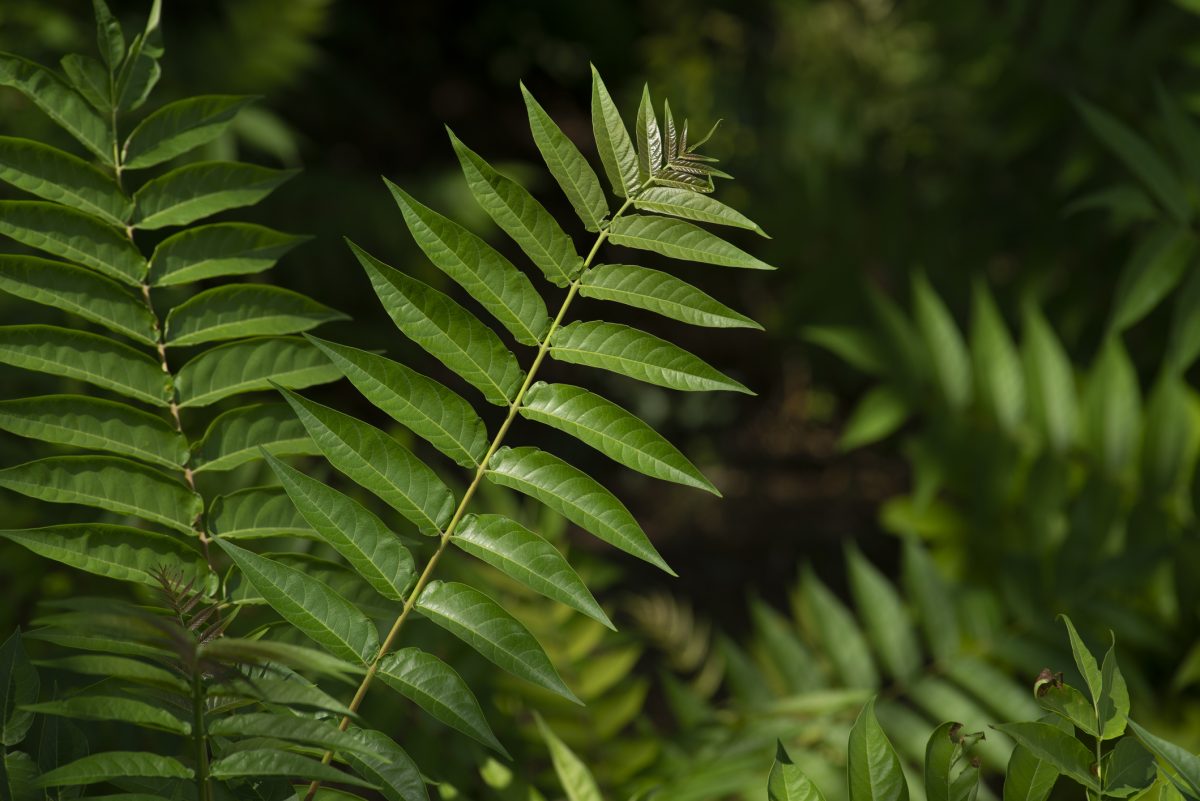Tree of Heaven
Tree of Heaven is an invasive tree species native to China. It spreads quickly and crowds out native plants. The loss of native plants reduces the biodiversity of an area. This results in reduced ecosystem health and less resilience to environmental change.
Tree of Heaven is a preferred host plant for the adult Spotted Lanternfly, an invasive insect identified as an emerging threat to the forestry industry. The insect is not currently present in Canada, however.
What it looks like

| Form | A tree, 18 to 21 metres tall at maturity. |
|---|---|
| Habitat | Grows well in disturbed areas, often found alongside edges of woodlots and canopy gaps. It’s known to sprout out of cracks in the pavement. |
| Leaves | Leaves are clustered into 11 to 41 leaflets, with each having 1 to 2 rounded teeth at the base of each leaflet. Leaves emit a foul smell when crushed. |
| Flowers | Yellow-green and appear in the late spring. |
| Fruits and seeds | Flat and papery, clustered together, reddish-orange and turn brown by fall. |
| Bark | Grey, with long, thin, whitish streaks at maturity. |
| Additional characteristics | Trunk and branches of the tree are fragile and break easily, which may cause injury or damage to property and infrastructure. |
How it spreads
Tree of Heaven spreads aggressively by seed and roots, which can sprout several new trees near the parent plant.
What you can do
Report Tree of Heaven plants found in City parks and natural areas.